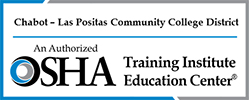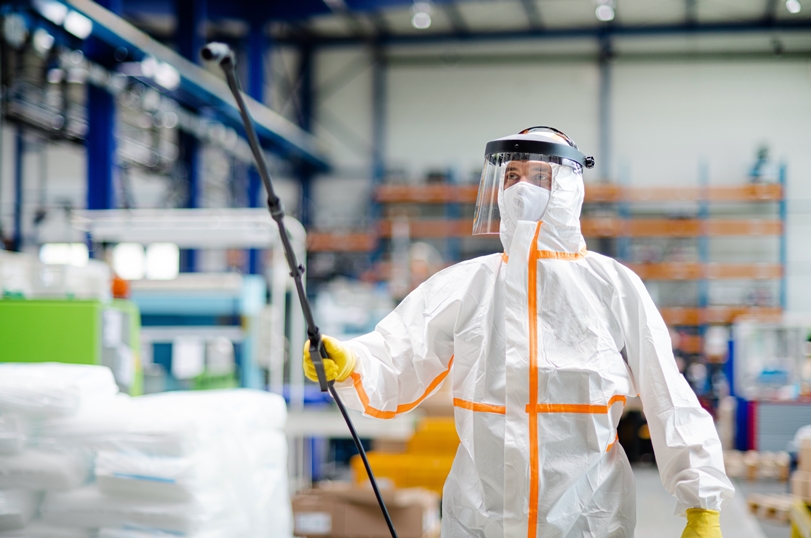by Dick Monod de Froideville, I.H., MPA |
Most managers responsible for Occupational Safety and Health have a marginal understanding of either the concept and/or context of Industrial Hygiene. This premise has been tested and found true anecdotally as well as functionally. Anecdotally this is true based on my 33 years as a Cal/OSHA Compliance Officer specializing in Industrial Hygiene. Statistically this is true because an examination of the 25 most common citations issued by Cal/OSHA since 2004 indicated that five of the top ten violations have Industrial Hygiene principles and practices at their core.
The IIPP (3203), Hearing Conservation (5097), Heat Illness (3395), Haz.Com. (5194), Respiratory Protection (5144) and Emergency Eyewash/Shower (5162) codes are in large part performance based, comprehensive, complicated, require some initial determination and are clearly I.H.-related. Violations of these I.H. “rooted” codes tend to be characterized by Cal/OSHA as serious with the highest penalties, are rarely overturned under appeal, and for over 17 years have exacted a significant human and economic price, thereby demanding attention and subsequent action.
Before examining the legal text, it might be useful to clarify the type of codes subject to this examination. Safety & Health codes are basically separated into two types: “prescriptive” and “performance” codes:
Prescriptive codes are generally clear, concise and to the point, and can be recognized by inclusion of trigger words such as “shall,” “will” and “must”.
Performance based codes generally set up a “situation hazard” and provide options based on the environment and complexity of the “situation”. These codes present an if/then logic gate, ask the reader to choose the most appropriate resolution to the hazard, and are recognizable using such vague and ambiguous words as “should,” “could” and “may”. Despite such allowances, due caution should be exercised in picking any specific option since all these codes require evidence supporting the option…and this does NOT typically happen.
The IIPP (T8CCR3203), lovingly considered the “General Duty” clause of Cal/OSHA, was designed and written in such a way as to provide the employer a living document that is expected to expand and contract to suit current business realities. Although it does not specify any update frequency, 3203(a)(4) does intimate that it be established for the purpose of identifying “potential” hazards because of changes in the production process. This would be the first I.H. related instruction. The second subsection containing I.H. application is contained in T8CCR3203(a)(6), which requires “timely correction” of the hazards. Specifically, these general duty statements should lead the employer to a quantitative analysis of the two most common and serious hazards: noise and chemistry.
T8CCR5097(b)(1) is an elegantly written duty statement that is frequently overlooked and more importantly misunderstood because it is in a titled safety code that most employers don’t think applies to them; “Hearing Conservation”. The sentence, “When information indicates that any employee’s exposure may equal or exceed an 8-hour time-weighted average of 85 decibels, the employer shall obtain measurements for employees who may be exposed at or above that level.” The elemental language “when information…” means ANY, including subjective evidence such as raising conversational voice levels at a social distance of 3 feet, as well as machine and/or equipment manufacturers noise specifications as a trigger to quantify the values to determine IF a Hearing Conservation Program is required. Evidence of non-compliance is simply obtained by a) asking the employer for documentation of any sampling and b) referencing either the Sound Level screening with support documentation of machine and/or equipment data.
T8CCR5155(e)(1) states “(1) Whenever it is reasonable to suspect that employees may be exposed to concentrations of airborne contaminants in excess of levels permitted in section 5155(c), the employer shall monitor (or cause to have monitored) the work environment so that exposures to employees can be measured or calculated.” It should be self-evident by the title that this has I.H. written all over it. First, the term “whenever it is reasonable…” is easily proven for compliance by simply asking for the list of Hazardous Chemical SDS’ required to be maintained and reviewed in accordance with T8CCR5194 (Haz.Com), then searching for the lowest PEL, C, STEL or S designations and determining if the employer has ever sampled for those compounds. Note that the Code language does not suggest an “over exposure” is anticipated or proven. It simply mandates that the employer quantify the possible exposures, and where there is no proof of sampling, a citation could be readily issued for a failure to comply.
Additional to these primary hazards, the concept of the “ladder of control” is equally rooted in Industrial Hygiene principles and practices based on an examination of the text of T8CCR5141(a) through (c)(1-3), the final version of which became effective in 1979. This safety order was originally designed to apply to the only nationally directed auditing requirement for all CSHO’s nationwide; Haz.Com. Since then, however, its principles and practices have been mandated as a due diligence requirement for the abatement strategies for all Occupational Safety and Health Hazards.
It is important to remember the duty to perform periodic inspections mandated by the IIPP means that the employer look beyond the immediate safety related hazards such as slips, trips and falls and start examining their economic activities from a more global Industrial Hygiene perspective. Industrial Hygiene looks at all hazard assaults having any effect on the human organism because of the entire process flow from input, throughput as well as output of the business cycle. Industrial Hygienists analyze and quantify hazards either singularly or collectively by means of applying the scientific means and methods identified and categorized in the “OSHA Technical Manual”. Knowing, understanding and applying Industrial Hygiene principles and practices will help avoid either citations, workers compensation claims or both.
In the course of their work, the ultimate mission of all Compliance Officers is to compare, contrast and quantify the legal term “effective”. Compliance Officers and attorneys are like physics, they exist, will eventually make their presence known and can only be managed. How well the employer manages them is dependent on if it is remembered that the devil is truly in the details.
Dick Monod de Froideville
 Dick Monod de Froideville retired from the California Division of Occupational Safety & Health (Cal/OSHA) after 33 years in both the Enforcement and Consultation Units. His Cal/OSHA experience covered a wide range of responsibilities, including conducting safety inspections, surveys and investigations; consulting with employer and labor groups, government agencies and the general public regarding occupational safety and health issues; providing OJT and outreach training; and analyzing existing and proposed State occupational safety and health regulations and policies. Dick has provided training on a variety of topics for the OSHA Training Institute Education Center for many years, including sharing his expertise on Industrial Hygiene. He holds a Master’s Degree in Public Administration from California State University Dominguez Hills.
Dick Monod de Froideville retired from the California Division of Occupational Safety & Health (Cal/OSHA) after 33 years in both the Enforcement and Consultation Units. His Cal/OSHA experience covered a wide range of responsibilities, including conducting safety inspections, surveys and investigations; consulting with employer and labor groups, government agencies and the general public regarding occupational safety and health issues; providing OJT and outreach training; and analyzing existing and proposed State occupational safety and health regulations and policies. Dick has provided training on a variety of topics for the OSHA Training Institute Education Center for many years, including sharing his expertise on Industrial Hygiene. He holds a Master’s Degree in Public Administration from California State University Dominguez Hills.

